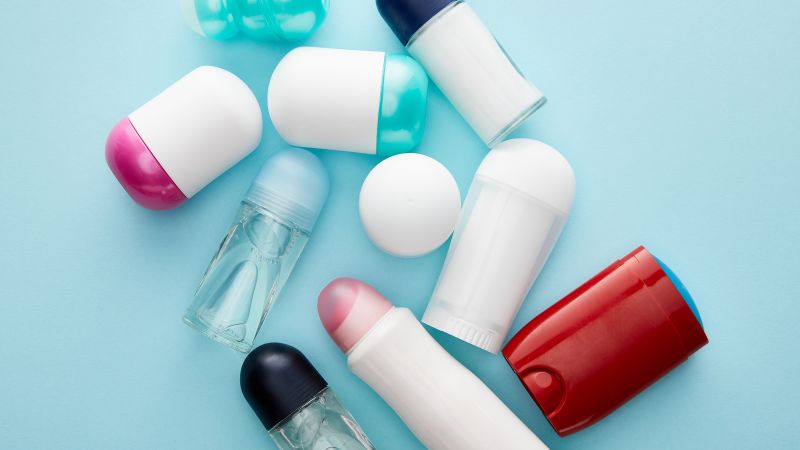[As if drugstore aisles weren’t already overflowing with dozens of conventional and natural underarm deodorants, an array of sticks, creams, and sprays from heavily marketed big brands now promises “whole-body” odor control. The products often come labeled with explicit or less than subtle nods to private areas.
“It is clearly a trend right now,” said Dr. Marisa Plescia, vice president of the Society of Cosmetic Chemists, a professional association representing the cosmetics and personal care industry. “Obviously we know that there are other areas that do have a tendency to have some body odor — areas, like the groin, that can be a little bit more susceptible to microbial growth. And after the success of small brands offering products for smelly pits, odiferous nether regions and everything in between in the past several years, “now everybody is like, ‘OK, we need to launch an all-over deodorant.'”
Many of the products marketed for all-over use are functionally the same as traditional deodorants or body sprays. They often have powdery elements that absorb sweat — such as arrowroot (Maranta arundinacea) powder, tapioca starch, and magnesium carbonate — along with fragrances to mask odor. Most don’t contain sweat-controlling aluminum salts like traditional antiperspirants, but some do.
One such ingredient is mandelic acid, a gentle alpha hydroxy acid that’s known to kill bacteria on the skin (though the mechanism of how isn’t entirely clear to researchers). This AHA is the heavy hitter in Lume, the trailblazer of the all-over deodorant market, and its brother brand, Mando.
Another example is magnesium hydroxide, a common ingredient in natural deodorants. It increases the pH on the skin, making the environment less acidic and therefore less hospitable to odor-causing bacteria such as Staphylococcus hominis and Corynebacterium tuberculostearicum, Plescia said.
The Curie brand, made famous on the reality TV show “Shark Tank,” attacks bacteria with good old-fashioned witch hazel, along with a cadre of newer ingredients used to keep bacterial growth in check. Those ingredients are byproducts of the Lactobacillus and Saccharomyces bacteria commonly found on skin — what Plescia calls “post-biotics.”
“I think it’s really interesting that we’re finally attacking body odor in a better way,” Adigun said, pointing out that dermatologists regularly treat persistent body odor with topical prescription antibiotics. But they are only applied to the armpits, she added.
From a biological perspective, should you add all-over deodorant to your daily routine? Experts say no.
“We don’t stink everywhere. So I don’t see why we need to put deodorant everywhere,” Adigun said. There are sweat glands all over the body. But only a small portion of them are responsible for body odor.
Called apocrine glands, they are primarily concentrated in the armpits and around the groin. They release sweat that’s rife with fats and proteins that provide an all-you-can-eat buffet for S. hominis and other members of the skin’s microbiome. Body odor is the product of these bacteria digesting the victuals in apocrine sweat and producing pungent compounds that we perceive as BO. The majority of your sweat glands don’t provide such a nutritional bounty and therefore don’t give rise to odor.
On a more philosophical level, do you need full-body deodorant? Also no. Plescia doesn’t appreciate the implication that we smell bad and need to put something all over our bodies to smell better.
In the past, she said, body sprays from Bath & Body Works or Axe were marketed for their scents. “Now, though, we’re seeing it as: ‘You need to use products all over your body to help you not smell,'” Plescia noted. “Is that really a great message to people?”
As with anything you wipe, spray or rub on your body, there is a chance that some ingredient could irritate your skin.
“Unfortunately, many of my patients that have more sensitive skin find all the whole-body deodorants irritating,” said Dr. Jeanine Downie, a dermatologist in Montclair, New Jersey. Common irritants include pentylene glycol, phenylpropanol, potassium hydroxide, and fragrance.
Adigun stressed that people with vaginas need to be careful about what they put near them. The skin in the area is very sensitive, and the vagina supports a delicate balance of microflora. Bacteria-killing ingredients can disrupt that balance, potentially leading to yeast infections and bacterial vaginosis. Even if a product’s instructions say that it’s for external use only, the line between external and internal is not always clear.
If you don’t have sensitive skin and like the way deodorant creams and sprays feel and smell, there is nothing concerning about using them. But if you bathe regularly, you shouldn’t need them, according to Downie.
Source link

